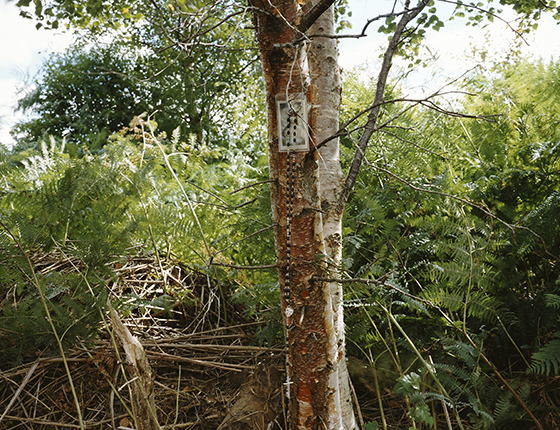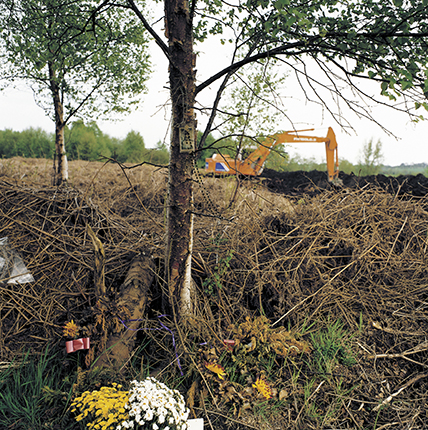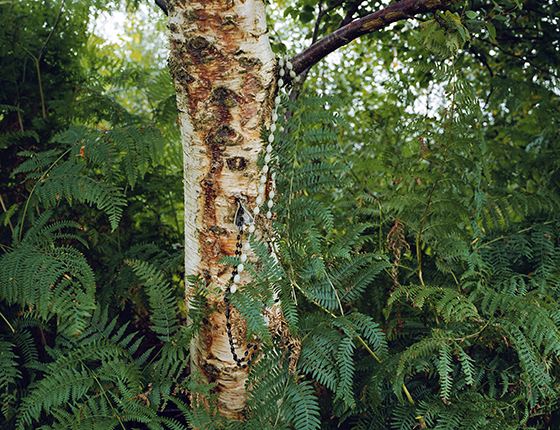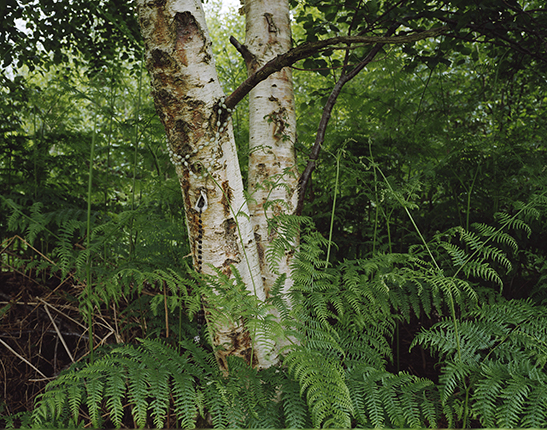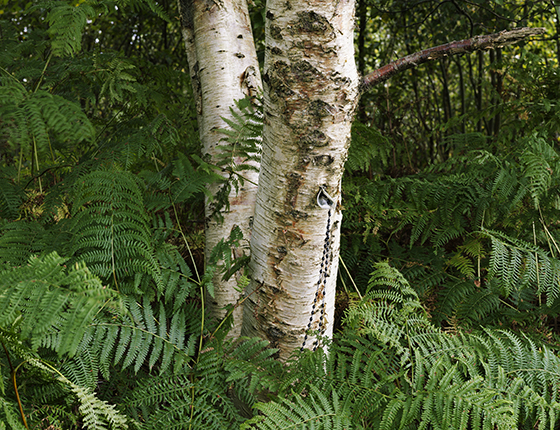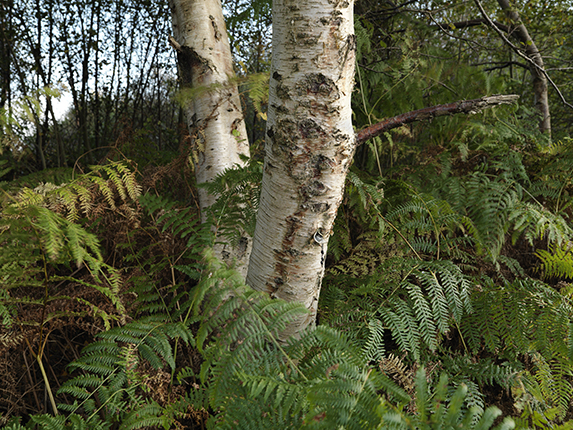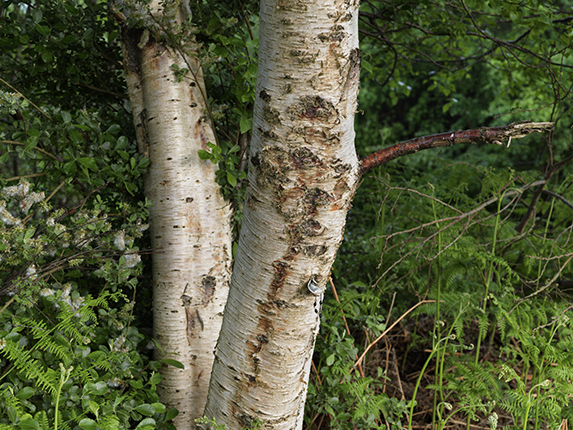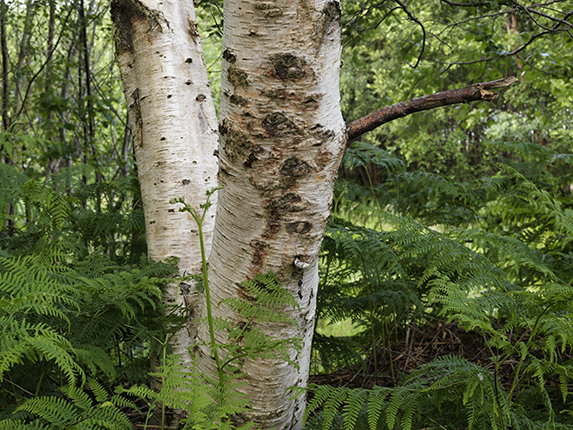I made my first photograph of what I would subsequently term The Swallowing Tree during the first search in 1999 for the bodies of Kevin McKee and Seamus Wright at Coghalstown Wood, Wilkinstown. These two young men belonged to a small group of people who became known as the Disappeared from the conflict in Northern Ireland. These people were all Catholics who had been vanished by the republican movement in the 1970’s and early 1980’s as a means of ‘policing’ their community. What separated these people from other atrocities was the absolute denial of their fate and whereabouts by the IRA. They hovered in a limbo-land of uncertainty and doubt. Eventually in 1999, as part of the peace process, the IRA admitted the ‘killing and secret burial’ of ten people and released a list of locations where nine of these people had been buried. These named locations were mostly anonymous bogs but they shared one final twist of fate. All the locations were in the South of Ireland. These people had been exiled in death.
I photographed the tree at Coghalstown Wood again during the second unsuccessful search in 2000. This image was included in the publication Innocent Landscapes that explored the searches at all the named locations in 1999 and 2000 – searches which only managed to return three remains thus creating a haunting internal diaspora. Both of these images are straight photographs documenting a simple shrine that displayed the typical totems of hope – a prayer card pinned to the bark, rosary beads and flowers – they were documents of visitation, expectation and remembrance. In between those two years I had also noticed how nature had begun to reclaim the wider landscape that had been upturned and searched, making the evidence of the first search disappear from view. It struck me as a double metaphor – a mirror of the killers’ original intention of nature erasing traces but also nature attempting to heal through growth through cycles of life and death. With this in mind I decided to make annual re-visits to all the sites and follow this process of re-absorption in subsequent years.
Coghalstown Wood was of note because of the quite avid growth of trees from seeds dispersed in the first search, so much so, that within a few years a dense growth of 12 ft saplings readily swayed in the wind as the woodland renewed itself. Every year I would re-photograph certain aspects of this landscape but solely from memory. I would try to remember each year exactly where I had taken the photograph(s) the previous year. I wasn’t interested in an accurate repeating typology but one that might vary with my inconsistent memory. This action was intended to act as another small metaphor within the work. Some years I couldn’t position myself where I thought appropriate due to the previous years growth and so this also shaped the photographs I would make and layered the work in yet another way.
Due to the fallibility of recall I had forgotten about the religious image pinned to the tree until one day in June 2006 when I was making my usual re-visit a little earlier in the summer than normal. As a result of this the ferns had not quite grown to their annual height that had concealed the small icon in other years and there it was, waiting to be found. It was a significant moment and an old photograph by Marialba Russo erupted from my photography memory – a ghostly photograph of a religious ritual in southern Italy where part of the bark of young tree had been split in half and a young boy is captured being passed forwards and backward across the rupture by relatives who would then place a religious image within the bark which would then be re-bound. In this act the image as a representation of the child’s spirit would reside protected deep within the tree as it grew. As photographers, both consciously and unconsciously, we often generate echoes of echoes of echoes.
I then photographed The Swallowing Tree every year from that point on, each time from memory. They are not aesthetically beautiful images. They too are simple direct documents of an ongoing natural process but they are loaded with a deeper meaning. For over a year between 2009 and 2010 this landscape was intensively searched yet again to no avail. The recovering woodland was stripped bare but the thin line of trees which contained the memorial tree was untouched and the process of ingestion continued. In and of itself this swallowing is a powerful metaphor for all my work on the Disappeared – a memory being slowly subsumed by voracious nature and the passage of time. And yet at the same time it’s protrusion proclaims a small act of defiance, a punctum of remembrance in opposition to concealment in an isolated wood in County Meath.
David Farrell, January, 2012

